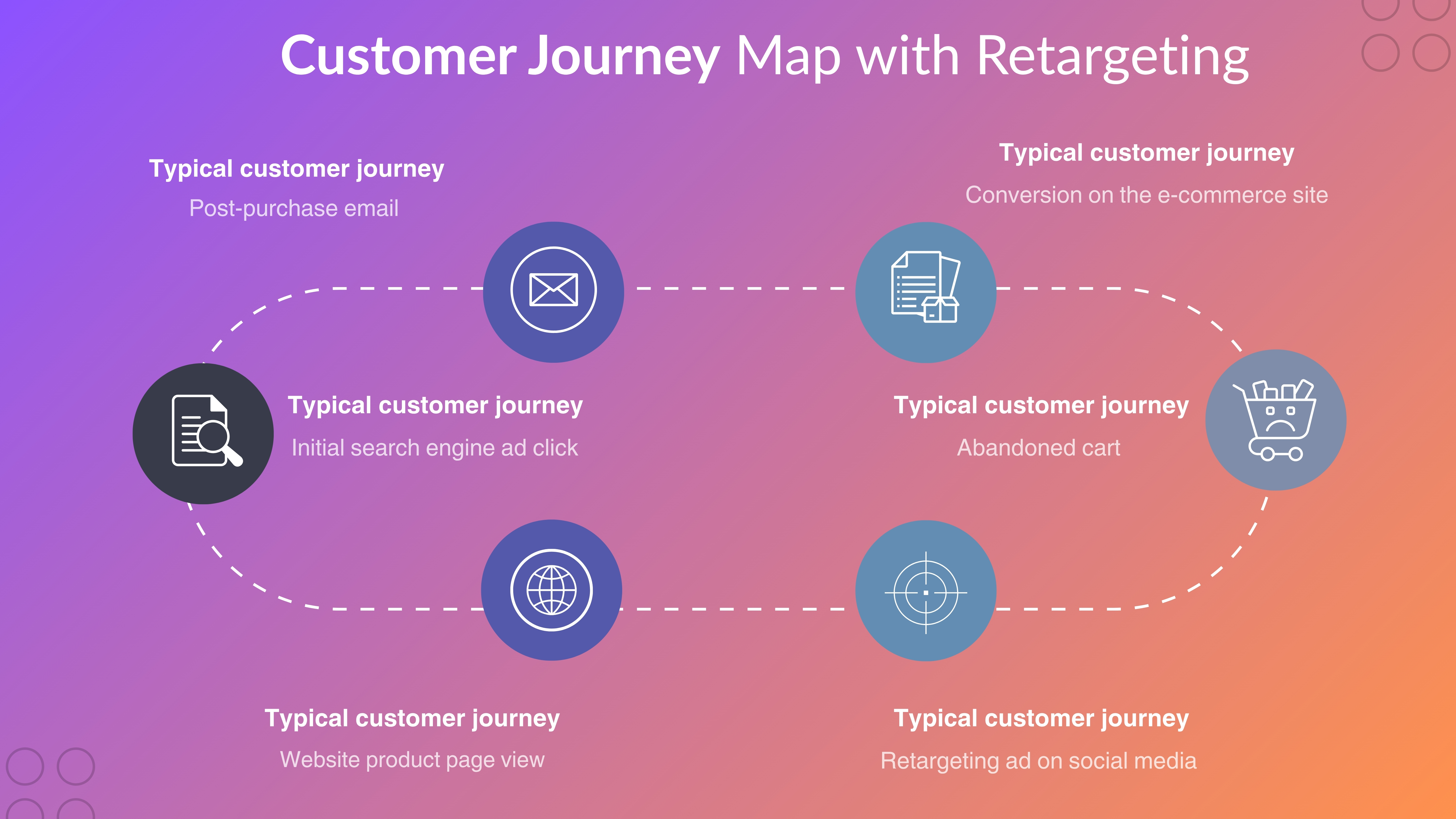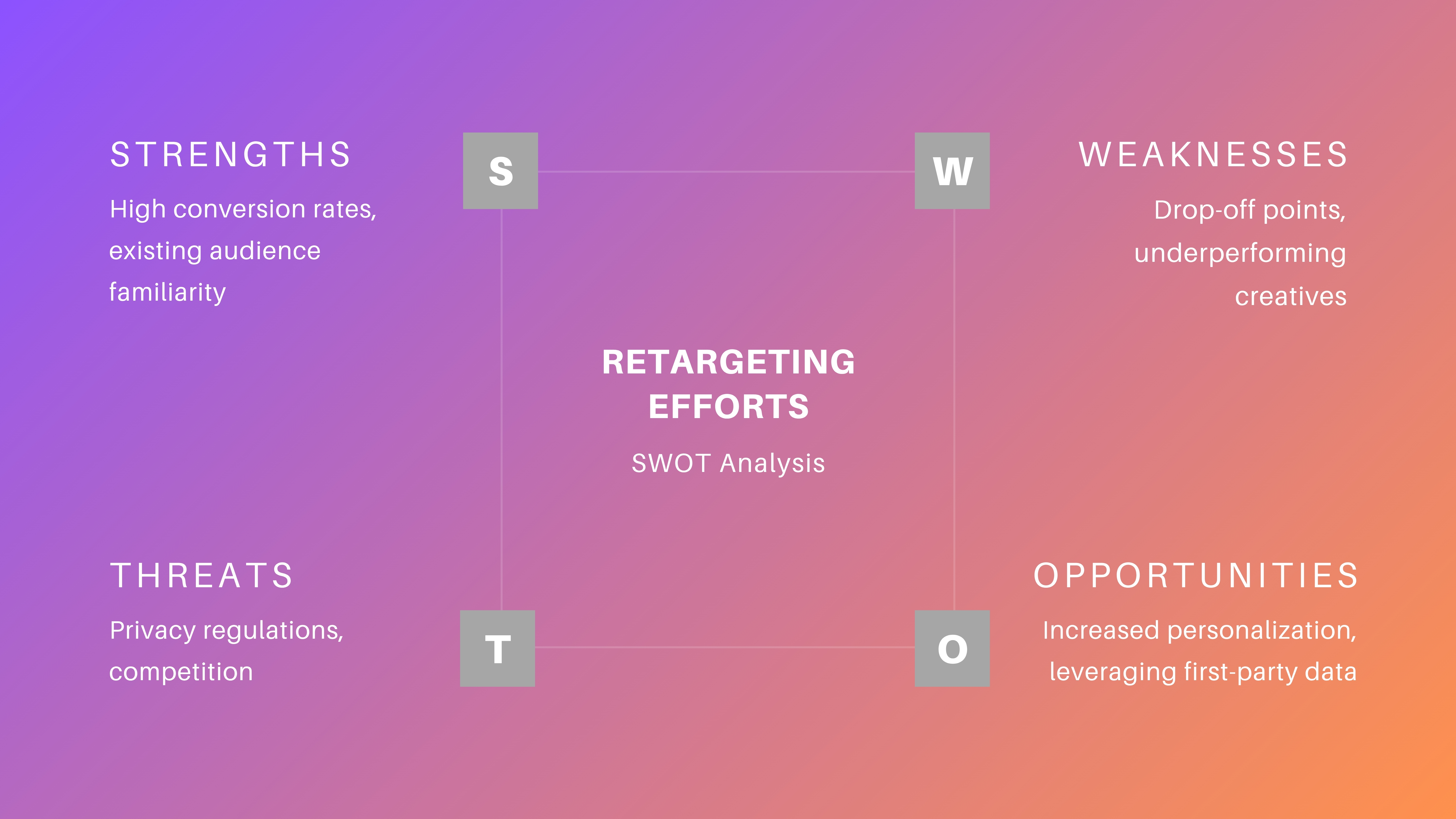What Founders Should Know About Retargeting in 2025: An AI-Driven Guide
.jpg)
In the fiercely competitive digital arena of 2025, the cost and complexity of acquiring new customers continue to escalate. Founders are relentlessly searching for a strategic edge, a method to maximize every marketing dollar and transform hesitant prospects into loyal, long-term customers. This is precisely where retargeting (also known as remarketing) transcends being merely a tactic; it emerges as a fundamental pillar of any robust and sustainable growth strategy.
What is Retargeting in 2025?
Retargeting in 2025 is the strategic process of re-engaging users who have previously shown interest in your brand, products, or services. Unlike broad advertising, it targets a "warm" audience that has already had a touchpoint with your business perhaps by visiting your website, interacting with your social media, or even abandoning a shopping cart. The goal is to nurture these interactions into conversions and foster long-term customer relationships.
Retargeting vs. Other Marketing Tactics
Understanding the distinct role of retargeting is crucial, especially when compared to other common marketing tactics like cold acquisition or broad awareness campaigns.
-
Cold Acquisition: This involves reaching entirely new audiences who have no prior knowledge of your brand. It's essential for initial market penetration but typically has higher costs per acquisition and lower conversion rates due to the lack of existing familiarity or trust.
-
Brand Awareness Campaigns: These aim to increase overall recognition and recall for your brand among a wide audience. While vital for long-term brand equity, they are not directly focused on immediate conversions.
-
Retargeting: This sits uniquely in the middle, focusing on the highly valuable segment of users who have already expressed some level of interest. It leverages that existing familiarity to drive more efficient conversions and build deeper relationships. Unlike cold ads, retargeting messages can be highly personalized based on past behavior, leading to significantly higher engagement and ROI.
Why is Retargeting More Critical Than Ever?
The digital ecosystem is in constant flux. Key factors like escalating customer acquisition costs (CAC), intensifying market competition, and the continually evolving privacy regulations (most notably, the impending deprecation of third-party cookies) are fundamentally reshaping how marketers connect with their target audiences. Within this challenging environment, strategically focusing on users who already possess some familiarity with your brand offers a distinct and undeniable advantage:
- Higher Conversion Rates: Visitors who have previously demonstrated interest are statistically far more likely to convert into customers compared to entirely cold leads.
- Superior Cost Efficiency: Re-engaging warm leads is, almost universally, more cost-effective and yields a higher return on investment than the arduous process of acquiring completely new ones.
- Potent Brand Reinforcement: Consistent, highly relevant messaging delivered through retargeting builds profound brand trust, enhances recall, and ensures your brand remains top-of-mind throughout the customer journey.
- Navigating Privacy Shifts: As privacy regulations tighten, first-party data strategies are becoming paramount. This makes your existing audience and the data you collect directly from them an increasingly invaluable asset for compliant and effective marketing.
For founders, optimizing every single stage of the sales funnel is no longer negotiable; it's an absolute imperative. Retargeting in 2025 is not merely about chasing website bounces; it's about intelligently nurturing relationships, providing value, and strategically guiding users through their personalized path to purchase.
How to Design a Great Retargeting Strategy in 2025
Founders committed to mastering retargeting and maximizing their marketing efficiency should rigorously focus on implementing these actionable strategies:
Map the Customer Journey with Retargeting Touchpoints
 Start by meticulously mapping each interaction your customer personas have with your brand, specifically identifying where retargeting can play a role.
Start by meticulously mapping each interaction your customer personas have with your brand, specifically identifying where retargeting can play a role.
Match the Mood & Intent with Dynamic Creatives
As you learn from your audience segments, apply those lessons to your ad creatives. You can't just copy and paste; you need to match the user's mood and energy at each particular touchpoint.
- Utilize Dynamic Creative Optimization (DCO) to automatically showcase the specific products or content a user previously interacted with.
- Personalize headlines and calls-to-action (CTAs) based on granular user behavior and segment. For instance, a user who abandoned a cart might see an ad with a clear "Complete Your Order" CTA, while a user who only browsed might see an ad highlighting a key product benefit.
- Continuously A/B test different ad formats (video, carousel, single image, text) to identify top performers.
- Address the user's specific pain point, question, or interest that initially brought them to your site, making the ad feel like a natural continuation of their journey.
Test, Track, and Optimize Continuously
Any changes you make to your retargeting strategy should be rigorously tested and tracked. Split testing is a fundamental practice here.
- For example, you might test two versions of a retargeting ad: one with a discount offer and one highlighting a unique selling proposition.
- It's essential to look at both quantitative data (conversion rates, ROAS, cost per conversion) and qualitative data (customer feedback on ad relevance).
- Forging mutual trust with your customers sets the foundation for developing an honest feedback loop: Customers trust that their voice matters to you, and you trust that their perspective is invaluable. In turn, you both benefit from applying their feedback in ways that improve and grow your business.
Make Incremental Improvements for Sustained Performance
Retargeting strategy works best when making incremental improvements. Changing a single variable at a time will give you the clearest signal of what is and isn't working.
- Keep your customer journey maps and audience segments up to date.
- Continuously compare your retargeting channel performance against other marketing channels to determine where to focus and refine your efforts.
- This iterative process ensures your campaigns remain agile and effective in the face of market changes.
Identify Strengths and Weaknesses in Your Retargeting Funnel
Once you map the customer journey, conduct a simple SWOT analysis for your retargeting efforts. Identify what's working exceptionally well (strengths) in re-engagement and where there are significant drop-offs or inefficiencies (weaknesses).
 This could involve analyzing conversion rates at different stages of the retargeting funnel, identifying underperforming ad creatives, or pinpointing segments that aren't responding. Learning from your strengths allows you to double down on effective tactics, while addressing weaknesses points to critical areas for improvement and optimization.
This could involve analyzing conversion rates at different stages of the retargeting funnel, identifying underperforming ad creatives, or pinpointing segments that aren't responding. Learning from your strengths allows you to double down on effective tactics, while addressing weaknesses points to critical areas for improvement and optimization.
Common Retargeting Pitfalls to Avoid
Even with the most advanced tools and strategies, common missteps can severely undermine your retargeting efforts:
- Ignoring Post-Conversion Suppression: Continuously showing acquisition ads to customers who have already purchased is a wasteful practice and incredibly frustrating for the customer.
- Generic Messaging: Treating all website visitors as a monolithic group misses the immense opportunity for powerful, conversion-driving personalization.
- Excessive Frequency: Bombarding users with too many ads leads directly to ad fatigue, negative brand perception, and potentially ad blocking.
- Lack of A/B Testing: Failing to rigorously test different creatives, offers, landing pages, and calls-to-action means you are leaving significant performance improvements on the table.
- Disregarding Privacy: Neglecting to stay updated on and comply with evolving data privacy regulations can lead to severe penalties, reputational damage, and loss of user trust.
How AI Transforms Retargeting for Founders
The inherent complexity of modern retargeting with its demands for hyper-segmentation, dynamic creatives, intricate cross-channel orchestration, and continuous real-time optimization can appear overwhelmingly daunting for lean founding teams with limited resources. This is precisely where AI-powered advertising transcends its role as a mere tool and becomes an indispensable, strategic asset.
AI fundamentally transforms retargeting by providing an intelligent layer that automates, optimizes, and predicts, offering capabilities far beyond human capacity:
- Intelligent Audience Identification: AI algorithms can automatically segment your audience based on nuanced behavioral patterns, demographic data, and predicted intent, uncovering valuable segments far beyond what manual analysis can achieve.
- Automated Creative Generation & Testing: AI can rapidly produce countless variations of ad copy and visual assets, then test them at scale to identify the highest-performing combinations, ensuring your ads consistently resonate with target segments.
- Real-time Bid & Budget Optimization: AI continuously monitors campaign performance against your predefined goals, making instantaneous, data-driven adjustments to bids and budget allocation across all platforms to maximize ROI and drastically minimize wasted spend.
- Predictive Performance Insights: AI can accurately forecast future campaign outcomes, allowing you to proactively adjust strategies and allocate resources where they'll have the most impact. This ensures your retargeting efforts are always ahead of the curve, optimizing for future success.
- Simplified Cross-Channel Management: AI can unify your retargeting efforts across diverse platforms (Google, Meta, TikTok, etc.), ensuring consistent messaging, synchronized delivery, and optimized performance without the immense manual overhead traditionally required.
For founders, this means moving decisively beyond the "slot machine" approach to advertising, where results are unpredictable. It means having an intelligent system that acts as an extension of your lean growth team, tirelessly working to bring back interested users efficiently, effectively, and at scale.
Retargeting in 2025 FAQ
What is the difference between retargeting and cold advertising?
The main difference is the audience. Cold advertising targets entirely new users who have no prior brand interaction, primarily for awareness or initial lead generation. Retargeting focuses on users who have already shown interest (e.g., visited your website, engaged with content), aiming to re-engage and convert them, leveraging existing familiarity for higher efficiency.
What is Dynamic Creative Optimization (DCO) in retargeting?
Dynamic Creative Optimization (DCO) is an advanced retargeting technique where ad creatives (images, headlines, descriptions) are automatically generated and personalized in real-time for each individual user based on their specific past interactions with your brand. For example, if a user viewed a red shoe, the DCO ad will show them that exact red shoe.
How does AI help with retargeting strategy?
AI transforms retargeting by enabling hyper-segmentation of audiences, automated dynamic creative generation, real-time bid and budget optimization, predictive performance forecasting, and simplified cross-channel management. It allows founders to run highly sophisticated and efficient retargeting campaigns without extensive manual effort or deep expertise.